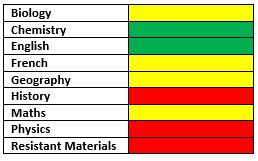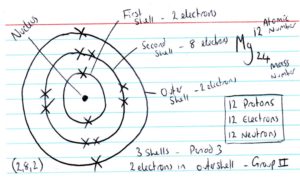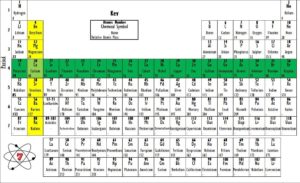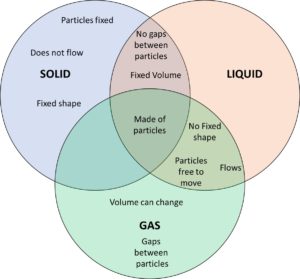The Ultimate Revision Guide
Contents

Exams are, unfortunately, one of those things that we all have to suffer at some point in our lives.
No one enjoys taking exams, but we don’t have very much choice in the matter. If we want to get qualifications then we need to take exams.
In this guide, we are going to look at how you can prepare for exams and how to revise for exams.
This guide covers everything you need to know, from how to create an environment that helps you to revise for exams, to how to organise your time effectively as well as looking at a range of different revision techniques that will help you recall and understand everything you need to pass your exams.
In this guide, we also take a look at what to do in the weeks and days building up to your exams as well as what to do on the day of an exam as well as what to do after each exam.
No matter if you’re revising for an end of unit exam at school, revising for GCSE or iGCSE exams or preparing for your university finals, this guide will help you to prepare in the best possible way.
Why revision is important
There is no getting away from it: revision is important. It doesn’t matter if you’re taking an end of unit test your teacher gives you, or you’re studying for your summer GCSE, iGCSE, A -level or any other kind of exam.
Of course, revision doesn’t make up for hard work and study over the last couple of years, but it does make a huge difference. There is just no way you can remember everything you need for your exams without revising.

Effective revision is one of the most important things that you can do to improve your grade. It can be the difference between passing or failing, getting a fantastic grade or merely scraping by. Even the ablest learners among us need to revise. Effective revision ensures that you reach your maximum potential.
The problem is no-one likes revising! We put it off, we delay it, we find any excuse not to do it. Your bedroom, which hasn’t been cleaned in weeks, suddenly becomes spotless. We can even find new and exciting ways to procrastinate. Sadly, none of this will help you obtain the grades you need.
The other big problem with revision is that most of the revision that we do is not much use. No, that is not an excuse to avoid revising! However, the simple truth is that most of us just don’t know how to revise. And revision is not as simple as just reading a book and hoping that the information sticks in our memory. Effective revision is a far more involved process. Although you might want shortcuts and “revision hacks,” they just don’t exist. There is simply no substitute for the hard work that comes with effective revision.
In this ultimate revision guide, we are going to look at how you can set yourself up for success and give you all the tools you need to revise. We’ll give you hints and tips on how to use different revision techniques and strategies. When you sit down to take your exam, you will do so with confidence, safe in the knowledge that you will be fully prepared and ready to ace your exams. If you follow the different techniques and strategies found in this guide, you will achieve the grades that you deserve.
What to do before you start revising
The first thing to do is make a clear decision to start revising. Until you’ve made this decision for yourself, you will find it challenging to become motivated and you will not revise effectively. However, the sooner you make this decision, the more impact it will have on you and the better your progress will be. Starting to revise seriously, six months before your exams, will see you getting amazing results. On the other hand, last-minute cramming a week before you are due to sit your exams won’t have much of an impact at all.
Revision should be an ongoing process. The best strategy is to revise as soon as you go back to school and carry on until you sit your exams. However, we live in the real world and this is something that most people will not want to prioritise.
Once you’ve set your mind on getting down to revising, it often seems like the best thing to do is to jump headfirst in and get cracking.
Don’t!
Wait!
Take a minute!
Although it can seem like the best approach to get started straight away, rarely in life is this a good idea for anything. Before you start revising, you need a plan. An effective revision strategy might take a while to devise, and it might seem like you’re wasting time and putting off actual revision, but a good revision plan will be much more effective.
How to create a revision space
The very first thing you need to do is to set up an effective revision space. Ideally, this should be a quiet space away from potential distraction, such as your bedroom or a study room.
Try to have a table, set up against a wall. Clear the table of all mess and general junk. That includes electronic devices and anything else that is not directly related to revision.

Of course, if you use a PC to help you revise, then that can stay on the table. On the assumption that you’re going to use it to revise rather than become distracted reading the latest celebrity gossip or tweeting away.
Make sure you have everything you might need before you start.
This might include:
Textbooks
Lined paper
Plain paper
Graph paper
Pens
Pencils
Coloured pens/pencils
Highlighters
Sharpener
Eraser
Ruler
Set Squares
Protractor
Folders
Calculator (the one you will be using in your exams, not your phone)
Blank flashcards
Post-it notes

Copies of your exam syllabus may also be helpful; you can get these from the exam board’s website. However, your teacher may have a simplified version, and this will be even more useful. (If you know your exam board you can download your syllabus by following these links, AQA, CCEA, Edexcel, OCR, WJEC for UK exams and Cambridge and Edexcel for iGCSE exams)
The key is to set your revision space up with everything you need before you start revising. You do not want to be getting up every twenty minutes to collect something new. Or worse still, sit down to revise only to discover you need to get something from the shops. All of these interruptions waste time.
The impact of a clear, organised workspace cannot be overstated. As you revise, your mind will be focused on one thing and one thing only (hopefully): your revision. Being focused leads to far more retention of information than is possible if you are distracted.
How to create a revision timetable
Once you have your nice shiny space ready to revise, you’re still not quite ready, so don’t jump in just yet. Effective revision requires a revision time table. To create one, print off a nice weekly organiser, Monday to Sunday, with times added.
Then write a list of all of the subjects that you have exams for. For each of these subjects, you are going to give a traffic-light colour to rate your level of understanding of this subject.
Red – You are not good at this subject and struggling to understand it, and your grades are not as good as you would like.
Amber – You are OK at this subject but need to work hard to get good grades
Green – You are making good progress in this subject, you understand the main concepts and are getting good grades

You must be honest with yourself when traffic lighting your subjects. If you are not, then you will find it harder to plan your revision time. Do not over grade yourself if you are weak at a subject! Be honest about it. It also means, do not underplay the subjects that you are good at.
Once you have traffic lighted your subjects it is time to write your revision time table.
When you are writing it, be realistic about how much revision you are going to do. There is no way you are going to be able to revise every available minute, so make sure you have free time built in.

It is not possible to revise while you are at school, so this section is blanked out. If you get study leave or during school holidays, you will need to add revision sessions in during this time.
On any given day, the same subject is never studied more than once. This helps to prevent burn out
Notice that in this example more time is scheduled to subjects that have identified as being weaker subjects (four sessions a week per subject). As you revise these subjects, you may find that your level of understanding improves, and you need to change the traffic light rating for each subject. You can then change how long you study each subject each week.
At no point are two “red” rated subjects placed next to each other. Because red subjects are the ones you find hardest, you do not want to study them one after another or else you will become fatigued.
Subjects that are rated as yellow are studied three times a week and green-rated subjects only twice a week as these are the ones that you need the least help with.
In this example, no more than two revision sessions follow each other. Again, this is to avoid fatigue. Also, nothing is scheduled too late at night as it is harder to study when you are tired.
You must try to stick to your revision timetable as best you can. It is your key to success. That said, it is important to relax. It is not possible to revise all the time, and doing too much can lead to burning out. If you make other plans that clash with your revision timetable, it’s OK to miss some of the revision. The earlier you start to revise before your exams start, the more flexibility you have to miss a few revision sessions now and then. Likewise, if you find that the schedule is either too challenging or too light, you can easily add or drop sessions from your timetable.
It is also important to remember, that your revision timetable needs to last up until your exams. If you revise all of the syllabi (hopefully you will), fantastic. But don’t think that means your revision is complete; it’s not finished until you have taken the exam.
Revision works best when you go over things multiple times. This concept is known as “distributed practice” It is essentially the process of going over the same things, multiple times on different occasions.
Things to avoid when revising
One common mistake that is frequently made while revising is to focus on areas that you are very good at. This generally happens because it is much easier to revise a topic that you are good at, and it’s much harder to revise a topic you are weaker at.
Revising topics that you understand well also gives a false impression that you are making better progress than you are. This tends to have a negative impact as it leads to missing revision sessions on a more frequent basis due to the impression that you don’t need to do as much because you are succeeding.
The other issue with only revising topics that you already have a good grasp of is that you are no longer revising your weaker topics. This defeats the main point of revision, which should be to prepare you for your examinations. Revising topics that you already understand will do very little to improve your exam grade. Revising topics that you do not understand so well will have a far bigger impact on your exam results.
How to revise properly
Before we look at specific revision techniques, I want to go through how to revise. This is not as obvious as you might think.
If you haven’t yet written your revision timetable, I strongly suggest that you do that before reading this section.
Although you have your revision timetable broken down into two-hour and one-hour chunks, your brain does not work especially well in long blocks. You will learn well at the start of the session and well at the end of the session. But the learning you do in the middle will not be especially effective. (You might have noticed that your teachers in school bookend your learning with an activity at the start and the end of the lesson. Well, that’s because you learn most at the start and the end of the lesson)

To avoid this, you need to break your revision sessions up even more.
If you have a two-hour block of revision planned from 4 pm to 6 pm, you should ideally break that down into four shorter sessions, each 25 minutes long. You must plan these breaks before you start revising and not take them at random. This allows your brain to have multiple “start” and “finish” moments and very little “in the middle”, and as we know, it’s the start and the end of a session where your brain does most of its learning.
You might be studying biology between 4 pm and 5 pm followed by chemistry between 5 pm and 6 pm. A two-hour slog is going to be tiring, and you will reach a point where you feel your “brain is full”, and you just can’t take more information in. This is exactly why we have our 25-minute blocks.
From 4:00 to 4.25, you would study biology. At 4.25, you take a short 5-minute break: go to the kitchen, have a chat with a parent or a sibling. Maybe check your phone (just don’t stay staring at it), and then at 4:30 you come back for another 25-minute session. Stop again at 4:55 for five minutes.
At 5:00, you´d start your second subject in the block, work for 25 minutes, break for 5 mins. Do the final 25 minutes, and then take a rest for at least an hour.
This pattern of work followed by short breaks followed by a longer break helps you to take the maximum amount of information on board. It makes your revision most effective. There is nothing worse than spending a couple of hours revising, being bored and then not remembering anything anyway, because you haven’t given your brain the breaks to take in the subject matter.
For this approach to work, it is important to take breaks when you have planned to and to stop revising when you planned to as well. Skipping the breaks or doing extra revision after your scheduled finish time is counterproductive.
Breaking down a revision session
Next, we need to look at how we would break down an individual revision session.
Let’s take the example of the structure of a leaf and photosynthesis. We might want to spend the whole hour studying this one concept.
It is important that each revision session only focuses on a few small concepts that are linked. Do not try to cover too much in one session. It is hard to retain information if you try to cover everything in one go.
0-10 minutes – Drawing the structure of a leaf, labelling the structures within the leaf and then writing down the function of each part of the leaf
10-20 minutes – Writing the word equation of photosynthesis, writing the symbol equation of photosynthesis and understanding how to balance it. Studying how the products of photosynthesis are used by plants.
20-25 minutes – Drawing and labelling the structure of a leaf again
25-30 minutes – Break
30-35 minutes – Writing the functions of each part of the leaf
35-45 minutes – Writing equations and describing the uses of the products of photosynthesis again
45-50 minute – Summarising both sections
Throughout a one-hour revision session, you would cover the same topics three times in total. This might seem like overkill and logic might tell us we would be better doing different topics rather than re-doing the same topics again. However, our brains will recall much more information by repeating what we are studying rather than going over it just once. This material can then be re-visited a few weeks or a month later.
This is the process of distributed practice which is one of the most effective, if not the most effective way of revising. Of course, this only works if you start your revision well in advance. So, if you’re reading this and your exam is tomorrow morning, well, it’s probably not going to work for you.
Choosing a revision strategy
There are lots of different techniques and strategies to revise. Each strategy has their advantages and disadvantages. No one revision strategy will work as a silver bullet for your revision woes. Generally, a combination of strategies works best.
Revision strategies can generally be broken down into two different categories:
Recall: Strategies that help you remember facts and pieces of information. These are generally of most use for learning about things that do not need to be explained in detail. These techniques also tend to work well at the start of your revision programme or if you have left everything to the last minute and are struggling for time.
Understanding: These strategies are generally best for revising things that need to be explained or when calculations or problem solving is essential. These strategies also work best towards the end of your revision programme.
Of course, it is never possible to understand a concept if you cannot recall the key information about that concept.
Some techniques may work well for you, others may not. Different things always work well for different people. It is worth experimenting with different strategies and seeing which ones help you learn the most.
Effective notetaking for revision
Notetaking is the revision technique that most people use. It is almost the default revision strategy. However, on its own, it’s a fairly poor strategy. If not done properly, very little information is absorbed. When used properly it is a very powerful revision strategy that helps you retain a large amount of information, especially when used in conjunction with other strategies. It’s a strategy that helps with recall and is a good starting point for a revision programme.

Step 1: Using pre-made revision notes (Like the ones available to download at www.makescienceeasy.com) or a textbook. Select a section that you want to revise. Make sure it is a fairly short section with only a few concepts.
Read through the information and underline or highlight the key information. Try not to highlight too much. It is important to pick the key information only.
Step 2: Using the notes, re-write the information in your own words. Making sure you emphasize keywords.
You may find it useful to break the subject matter down into bullet points rather than writing in paragraphs.
Step 3: Immediately after you have written your notes, re-read them.
Step 4: Spend around ten minutes revising a different concept.
Step 5: Try to re-write the notes from memory in as much detail as you can. However, your focus can be on the keywords.
Step 6: Compare the two versions of the notes; add any missing information to the second version.
Step 7: Next time you revise this subject (a few days later), try to re-write the notes from memory. Compare the two versions and add any missing information.
This technique helps commit key information to memory. By continuing to re-write from memory, you are re-enforcing this in your memory. If you simply highlight or copy out notes, which is the default revision technique, you will recall far less.
Summarising and condensing the key information helps to improve understanding.
Note taking variation
Step 1: Read through notes on a topic, highlighting key information.
Step 2: Summarise the concept from memory in roughly 100 words.
Step 3: Read through what you have written thoroughly.
Step 4: After a short time (ten minutes) re-summarise the concept, but this time try to write it in 50 words. Without losing any of the key information.
Step 5: After a short time (ten minutes), re-summarise the concept, but this time try to write it in 25 words without losing any of the key information.
This technique also helps to recall key information. By condensing that information down when re-writing it, without loss of key information, it helps improve understanding.
These techniques are a fantastic starting point for any revision programme as they help remind you of the various concepts that you have learned.
Post it Notes

This is a technique which can help you learn even when you are not actively revising. It can be used outside of your regular, organised revision sessions to help continually remind you of key information. It also works well alongside note-taking.
Revision using post-it notes is best used for recall of key information, focusing on specific points rather than revising a broad topic.
Step 1: Choose a topic with lots of small facts to remember. For example, the Alkali metals.
Step 2: Write key information on post-it notes. Limit the amount of information on each post-it note. Try not to have more information than you can take in at a glance.
Step 3: Place the post-it notes around the house, in places where you will see them multiple times a day.
Step 4: Every time you pass the post-it notes, glance at them and read them, try to recall the key information that each one shows you.
Step 5: After roughly a week, remove the post-it notes. Write new post-it notes on a new topic, and place these around the house. Repeat the process once a week.
This technique continually re-enforces key ideas. You can pass a post-it note and be exposed to a concept over a hundred times a week using this method. This can help you remember the key information.
This technique does not work so well when it comes to understanding complex concepts or problem-solving. However, it does help with recall of equations but not the application of those equations.
Post it Notes variation
This technique can also be used to remember key-words and their definitions. The process is the same as before, but using key-words.
Once post-it notes are removed after a week. They can be placed into a folder, in alphabetical order to create a glossary of key-words.
Flash cards
Flashcards are another excellent tool to help you revise. They’re always excellent when it comes to helping you recall information and they can be used to help you understand concepts, but they are primarily a recall tool.
While studying for your exams, you can create flashcards on almost any topic at all. They’re a great way to store and organise information. However, when it comes to making learning connections between different subject areas, you may find that flashcards are quite weak.
Step 1: Pick a topic, for example, pressure.
Step 2: Break this topic down into small sub-topics based around key ideas.
- Calculating Pressure
- Pressure in Liquids
- Hydraulics
- Atmospheric pressure
- Measuring gas pressure
Step 3: On one side of each flashcard write down the title for that sub-topic. Ideally, you do not want more than one flashcard for each sub-topic. You want to try to condense the information down as much as you possibly can.
Step 4: Summarise the topic on the other side of your flashcard. Try to only include the most important pieces of information. Ideally, learning to recall and remember key pieces of information will help to trigger your brain to remember more of the wider topic.
This will be especially true if you started your revision with high-quality note-taking.
Try to make information pop off the page, too. If you’re writing an equation, use a highlighter to make this stand out.
Diagrams can be exceptionally helpful on flashcards, too, so, don’t be afraid to include a visual representation of key information if you think that helps. For most people, it’s easier to recall information that is a visual format, rather than information that is exclusively written as text.
You can also mix in one or two keywords as prompts with your diagrammatic information.
Flashcards can be used to create mnemonics to help you remember information, especially if that information needs to be in order. For example, If you’re struggling to recall the order of the planets in our solar system, you could use: My Very Easy Method Just Speeds Up Naming (Planets) – Mercury, Venus, Earth, Mars, Jupiter, Saturn, Uranus, Neptune, (Pluto)
Try to mix your flashcards up a little. Try to not have all of your flashcards look identical to each other. It is also important to try to avoid spending too long on each card. Around five minutes should suffice. If you’re spending more time than this, then there is a risk that you are putting too much information on your cards, and that’s going to make it challenging to recall all of the key information.

Step 5: Once you have your flashcards written, you need to put them away for around half an hour, focus on something else.
Step 6: After around half an hour, return to your flashcards and look only at the side with the name of the topic on it. Try to recall what is written on the other side of the card, focusing on the key information and any equations. If there is diagrammatic information, visualise what it looks like in your head.
After a minute, if you’re happy that you can remember everything on the card – or you’re stuck – turn over the card, have a look and see how much you got correct. If you are missing any information, or you have recalled something from a separate topic, try to focus on this information to do better next time.
These flashcards can then be used whenever you need to go over key information.
As you get closer to your exams you can mix all of the flashcards for a subject, shuffle them up like a deck of cards, and then pick some at random. Make sure that you can recall the key information, even if it’s a flashcard you may not have looked at for a long time.
Flash cards variation 1
Once your flashcards are written, rather than revising from them by looking at the topic and recalling the key information on the card, you can go backwards and work the other way. You can read the key information and then try to work out the topic that this information is linked to. Although this may seem like a very simple task, by approaching a task in a slightly different way, you’re helping to re-enforce what is committed to memory. Your brain likes variety!
Flash cards variation 2
Rather than writing topics down on one side of flashcards and then writing the key information, you can also write questions down on one side and then the answers on the other. Try to keep your answers written in a way that uses more than just text though.
Visual revision methods

Labelled diagrams can aid recall of key information. Especially if you can recreate the image from memory
These revision methods are based on visual prompts rather than note-taking. They can be incredibly useful for recall if you need to remember a diagram such as the structure of a cell or the carbon cycle.
Where these techniques shine is when it comes to understanding information. Visual revision methods can allow you to make contextual links between different topics. This not only helps recall but develops a strong level of understanding.
One of the most powerful things about creating visual prompts is that, just like Post-it notes, they can be put up around your bedroom and house and learned from at all times, even when you’re not actively revising.
Drawing labelled diagrams
This is the simplest form of visual revision. It simply involves drawing out a diagram of something that needs to be recalled, for example, the carbon cycle and adding labels to it.
The labels can be just names, or they can have a little bit more information on them. Most of the information should be visual, not written. You should be able to glance at the diagram and take in some information or have your memory jogged. You don’t necessarily need to go into huge amounts of detail. In fact, having too much detail can be counterproductive.
This method can be used for any information that can be presented visually. A slight variation on this could be to have multiple versions of the same diagram, for example, the periodic table.
One version with groups and periods highlighted.
One version with the table broken down into metals and non-metals.
One version with each group in a different colour.

Mind maps
Mind mapping is also known as brainstorming, although it’s not quite the same thing. It can be one of the most powerful revision techniques you use. Unlike a lot of the other techniques, it helps with the understanding of key concepts rather than just recall. The key aim of creating a mind map is to link key ideas together.
Be warned, however, that creating a mind map can take quite a while. You generally need to put more effort into this revision strategy than some of the other study strategies we have mentioned, but, it’s generally worth the effort.
Step 1:
Choose a central theme for your mind map. This can be an incredibly broad theme, such as biology, or it can be a slightly more focused theme, for example, classification of living things.
The more focused your theme is, the more detail your mind map will contain. The broader your topic, the less detail you will have. It’s often a good idea to start with a very broad topic, create your mind map, then create additional mind maps based on the various branches of your map.
Write your topic down in the centre of a large piece of paper. A3 works well for this, or you can just Sellotape four A4 sheets of paper together.

Step 2:
Add major branches to your mind map. These are essentially the major sub-topics within your theme. Each of these branches should have some concept that attaches to the central theme of your mind map
If you chose the classification of living things, for example, your major branches might be:
The five kingdoms
Classification of Animals
Classification of Plants
Classification Keys
Each of these topics is conceptually linked to the overarching theme of classification. To improve this as a visual aid you might find it helpful to colour code each branch. It’s worth bearing in mind, if you think of new links as you go along, you can simply add them as you go. Mind maps do not need to be rigid and formulaic.

Step 3:
Add keywords and sub-branches to your major branches that are already on the mind map. If you can conceptually link to ideas, draw a branch between them. By doing this, you will help to break down information into key chunks, but you’ll also be able to see how those chunks link together, this will aid your memory and your understanding.
At this point it still a little bland. To make your mind map sing and turn it into a fantastic learning tool the final thing you need to do is to add diagrams, and other simple pieces of visual information that help to tie in all of the information together.

Venn diagrams
The final visual revision technique is to draw Venn Diagrams. Venn Diagrams are essentially maps that show where concepts are similar and where they are different from each other.
Just like with mind maps you need to choose a suitable topic, however, mindmaps are suitable for all topics, Venn diagrams tend to work best when highlighting similarities and differences. A good example of this would be the topic of solids, liquids and gases.
Step 1:
Draw three overlapping circles, in the centre of one, write solids, in another write liquids and in the final one write gases.
Step 2:
Think of a key piece of information about the topic of solids, liquids and gases. For example, the volume of a substance.
We know that Solids and liquids cannot be compressed. Gases, on the other hand, change volume based on the pressure they are exposed to. Because solids and gases have a shared quality, we write this piece of information where the circle for solids and liquids overlap. Gases, on the other hand, do not share this quality with other states of matter, so we would write this information exclusively in the gas circle, not in the overlap.
We continue to add information in the form of statements or diagrams until we have included everything we can think of for this topic.

Online revision
There are masses of resources online that can be used to help your revision. These can be incredibly varied in their scope ranging from detailed notes to quizzes and questions through to video tutorials. Some of this material is fantastic, some of it is less than satisfactory.
Plenty of the material that you can find online is free, while some of it requires you to pay for it. It can be hard to tell which material is worth your while and what is not. After all, at the end of the day, anyone can produce material and put it online for free. A large proportion of that material is simply not good enough.

There can are several reasons for this:
Material is not correct: It should come as no surprise to anyone that lots of the information you find on the internet is simply not correct. Anyone can put anything online; this is especially true of videos found on YouTube. Many of the revision resources that you might find are not written by teachers. They’re written by people with a general interest in what they are writing about, or they are written by other students. That’s not to say that everything is wrong, (our Youtube channel is a great place to revise science and you can be sure the subject material covered is correct) but small errors can lead to big problems and can create misunderstandings in your knowledge. Do you want that? It’s one of those things that can seriously impact your grade.
You also have to consider that if you are using revision notes or tutorials from someone who is not a teacher, although they may understand the topic itself, that does not necessarily mean that they understand how to teach someone else about that subject. If things aren’t explained clearly enough, then it’s only going to lead to confusion for you.
Material is at the wrong level: Another huge issue with many of the resources that you will find online is that it is simply not pitched at the correct level. If you’re studying for your GCSE exams or your IGCSE exams, you do not want revision that is too simplistic, or even worse, too complicated.
If your revision notes are too simple, you get a false impression that you are doing extremely well, when that might not be the case. Or you could be revising from material that is far too complicated. This gives another false impression, but this time, that you are not doing as well as you might be, which is an incredibly demoralising experience. You don’t want to be revising material that is too complicated, because it isn’t going to be on your exam anyway.
Let’s take Wikipedia as an example. It’s a fantastic resource of information. You can use it anytime you like to find information about pretty much any topic that you like. However, I would never recommend it to be used to revise for exams, because for the most part, the information is simply too complicated. You’ll end up becoming incredibly confused. It’s also open source, meaning anyone can contribute to it. This can and does lead to errors.
Doesn’t cover what you need to revise: The final problem that you might experience with online revision resources is that it simply doesn’t cover everything you need or doesn’t go into enough detail.
Let’s take BBC bitesize for example. It covers everything that will come up on your syllabus, however, it tends to only skim the surface of the material you need to study; it doesn’t provide much detail. This is perfect if you are confident and secure in your knowledge or if you only need to cover the main concepts without too much detail. If you need detailed information, it may not be able to help too much.
Now, you could head to YouTube, and you’re likely to be able to find everything you need to revise, but it’s not all in one place. You’re going to be spending hours trying to find the videos that you need. All that time could be better spent on revision. Plus, you have the issues already mentioned where you cannot be certain of just how good that information is.
If you’re looking for science revision, then we’d suggest our online courses at Make Science Easy. You can rest assured that all of the material is at the correct level: not too simple, not at a level beyond what you need. All of the lessons are prepared and delivered by expert teachers who know exactly how to present information so that you understand it and can apply it, giving you the best possible opportunity to pass your exams. Make Science Easy also has a complete set of revision notes and activities to download with each lesson as well as quizzes to check your progress and learning.:
Past exam papers

One of the most popular revision techniques is to practise past exam papers. When used correctly, this can be a powerful tool to both help you learn and prepare for your exam. It’s also a good way to gauge your progress and ensure that you’re on the right path as well as identify gaps in your knowledge and understanding. (Download past examination papers by following these links, AQA, CCEA, Edexcel, OCR, WJEC for UK exams and Cambridge and Edexcel for iGCSE exams. Make sure you download the correct past papers from your exam board and be sure to download the correct specification. If you’re not sure which exam board or specification you are studying for, check with your teacher)
However, blindly answering pasts papers can be unhelpful. Once your revision is relatively well developed, it’s worth downloading past examination papers and their mark schemes from your exam board. These can then be printed off.
Go through the papers and cut out each question. Organise these into categories. These categories should roughly match the ones you have already broken down in your note-taking.
Once you have finished revising a section, you can then attempt two or three exam questions from that topic.
The first times you attempt to answer exam questions, it can be advantageous to use your revision notes. Try to include as much relevant information as you can to answer the questions.
After you have answered the questions, use the mark scheme for those question scheme to check the quality of your answers. Take note of the things you have gotten correct and the things that you’ve missed.
If you have any misconceptions and wrong answers, make a note of this and be sure to revisit these concepts.
As you progress through your revision, attempt to answer questions without help from your notes. If your revision is progressing well, you should still be scoring well despite not using any notes.
When you become even more confident, look at the number of marks for each question. If a question is worth a total of five marks, then you should limit yourself to no more than five minutes for each question. Aim to spend one minute per mark.
Finally, as you get closer to your exams, attempt to answer full exam papers in full, keeping to the time limit and without using any notes.
The most important thing any time you revise with past exam papers is to critically correct your work and identify areas of weakness. The areas of weakness where you do not score as well should be the subjects that you focus future revision on. Topics that you consistently score well on should no longer be a focus for your revision, as you are much more secure in these areas.
Revising with others
Although not a strategy on its own, there is a lot to be said about working with someone else. If possible, try to schedule some revision sessions with friends, ideally in small groups of three or four. Revising together can be extremely powerful and can help information stick in your mind.
For example, you may decide to work in a pair to create visual aids. As you do this, you will inevitably question each other, get each other to explain what
you are doing and why you are doing it. These processes where you are thinking about what you are doing not only help you to recall key information, but they help you to understand. Effective revision should have recall and understanding as an outcome.

Other ideas that work well when working together.
Choose topics and write a section of ten questions on that topic. Get your partner to answer them. Try to correct each other when you make mistakes. If your answers lack detail, prompt each other for more.
Flashcards
work exceptionally well in pairs or small groups. One partner picks a flashcard. They can see the key information on that flashcard, while the other
partner can only see the topic. The partner that can only see the topic, explains to the other partner the key information. Whoever has access to the
key information can prompt the other for more detail.
Teaching each other is another revision strategy that you might want to try. Everyone chooses a topic then takes ten minutes to read on that topic and try to understand it. After ten minutes, everyone lectures their topic to the rest of the group. Those who are learning can ask questions about anything they are not sure about.
Those who are being taught will learn, but those who are teaching the topic will learn even more as they need to fully understand what they are teaching.
Keep the topic relatively short. This works best when covering small, specific topics.
What to do in the run up to exams
As you approach your exams, you’re going to need to start to make changes to your revision. But don’t worry, if you’ve been working hard up to this point, you shouldn’t have too much to worry about. If you have put off your revision and haven’t done very much, then much bigger changes are going to need to be made.

Four weeks before your exams
Re-do your subject audit, assigning grades of Red, Amber and Green to each of the subjects that you are taking. If you have been revising well, you will notice that all the subjects you assigned a red to at the start of your revision have become yellows and greens. The yellows have become green and the greens, have remained green.
If subjects have gone from green to yellow or red, or you haven’t made much progress, then you need to take another look at the strategies that you are using. They might not be working, so have a look at trying some others.
Re-write your revision timetable
Now that you have audited your knowledge again, you need to re-assign the time you are spending on each subject. If you were spending lots of time studying physics, because you had assigned it as “Red” at the start of your revision, but it is now a “Green” due to your hard work, then you probably don’t need to spend as much time studying physics, so re-assign some of that time to a subject you still haven’t mastered.
You may also want to look at the adding a few more revision sessions to your timetable. With only four weeks until your exams, you’re probably going to be putting your social life on hold for a bit. Some (but not all) of the free time you have should be re-assigned to revision, but try to keep the principle that spending more than two hours at a time revising is a bad idea.
Spend more time answering past papers
Now is the time to increase the amount of time you are spending on past papers. If you have been working hard, most of the information you need for your exams should be fixed to your memory. It is essential that you now focus on how to apply that knowledge. Practising exams will show you the types of questions that they ask you in exams and using the mark schemes will show you what the examiners are looking for in your answers.
You will develop the key skill of how to answer an exam question. If you pay close attention, you will notice that they tend to ask the same questions again and again with slight tweaks to them. This can help you identify what you need to focus on.
Two weeks before your exams
Print of a copy of your exam timetable. Your school should provide you with one, however, it is worth printing off one that is customised for your exams. Highlight when each exam is.
Make sure you have all the equipment you need: pens, pencils, erasers, rulers, set squares, calculator, dictionary (where permitted) and a clear pencil case (you will not be allowed to take any other pencil case into the exam room).
It is also essential that you know how to properly use your calculator. If you are not sure, now is the time to seek out your maths teacher and ask for help.
One week before your exams
Refine your exam timetable again.
Your exam timetable should now be tweaked again. Focus solely on the exams that you have first. Pay less attention to the exams that are coming up in three or four weeks. You should only be studying the imminent subjects.
The night before your exam
Eat a good meal.
Spend time revising and going over the key points for the exams you have the next day. You should be refreshing your memory at this point.
Set your alarm for the next day.
Get a good night sleep. This is sometimes easier said than done, especially if you’re nervous.
The day of the exam
 Wake up early, but not too early, ideally an hour or 45 minutes before you need to leave home.
Wake up early, but not too early, ideally an hour or 45 minutes before you need to leave home.
Have a good breakfast, even if you normally skip breakfast.
Leave home in plenty of time, aim to arrive at school at least 30 minutes before your exam is due to start. Running late leads to stress and hurts your performance.
Avoid last-minute cramming! You’ve worked hard, you’ve prepared, you don’t need to cram!
Make sure you are well hydrated, but avoid energy drinks!
Take a comfort break before the exam; there is nothing worse than sitting through a two-hour exam while needing the bathroom.
After the exam
Avoid talking about the exam with your friends.
Specifically, avoid discussions like “what did you put for question 6? I wrote ……” it never makes anyone feel better and all it does is create worry.
The exam is over, you have written your answers, nothing will change that, so try not to worry about it and move on.
If you have another exam in the afternoon.
Eat a good lunch, but don’t overeat as this can leave you sleepy.
Try to chill out during the gap between exams.
Hydrate yourself.
Make sure you take a comfort break before the exam.
Once you get home
Cross of the subjects that you have just completed from your exam timetable. Add upcoming exams to your revision timetable in their place. Make sure you stick to your revision time timable. You’re almost done, don’t slack off now!
After all your exams are over
Relax! You’ve worked hard; you’ll reap the rewards for all your hard work. So sit back and wait for exam results day. You’ll get the results that you deserve.

